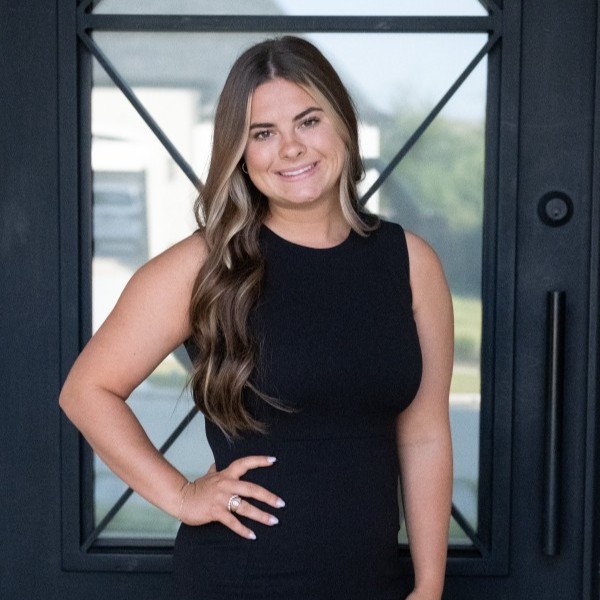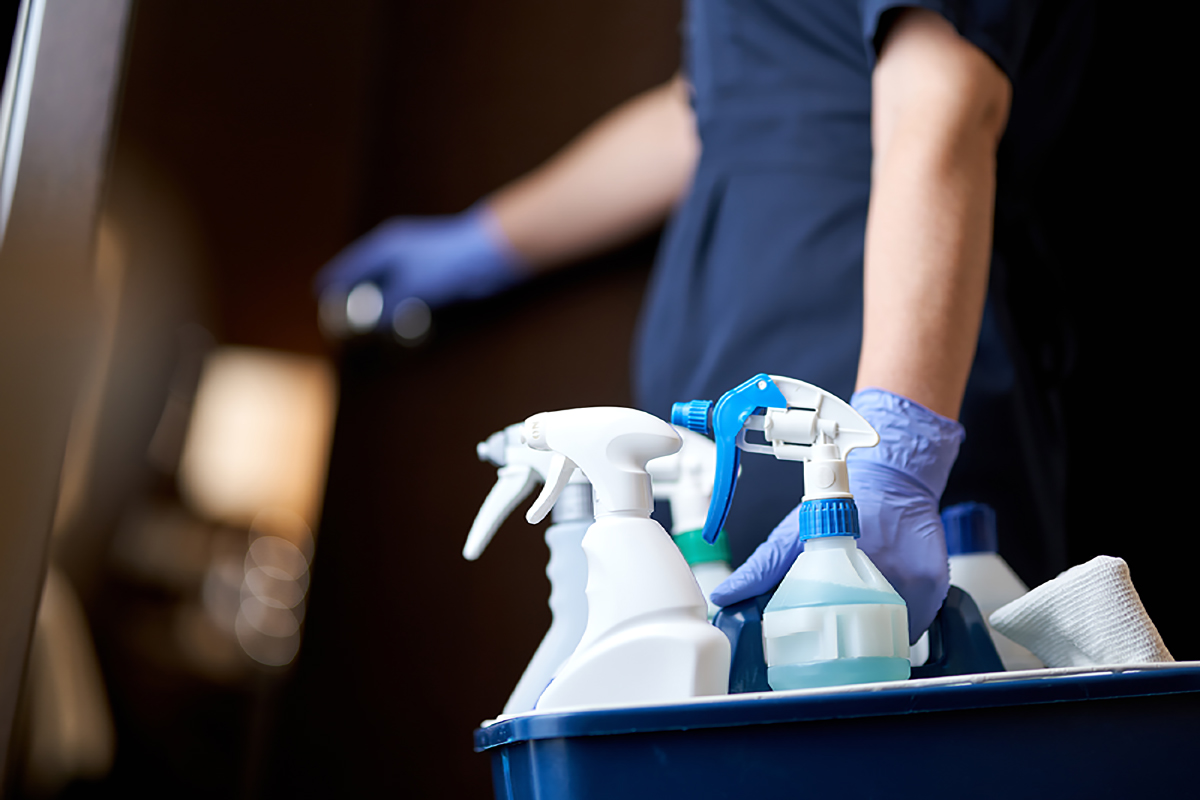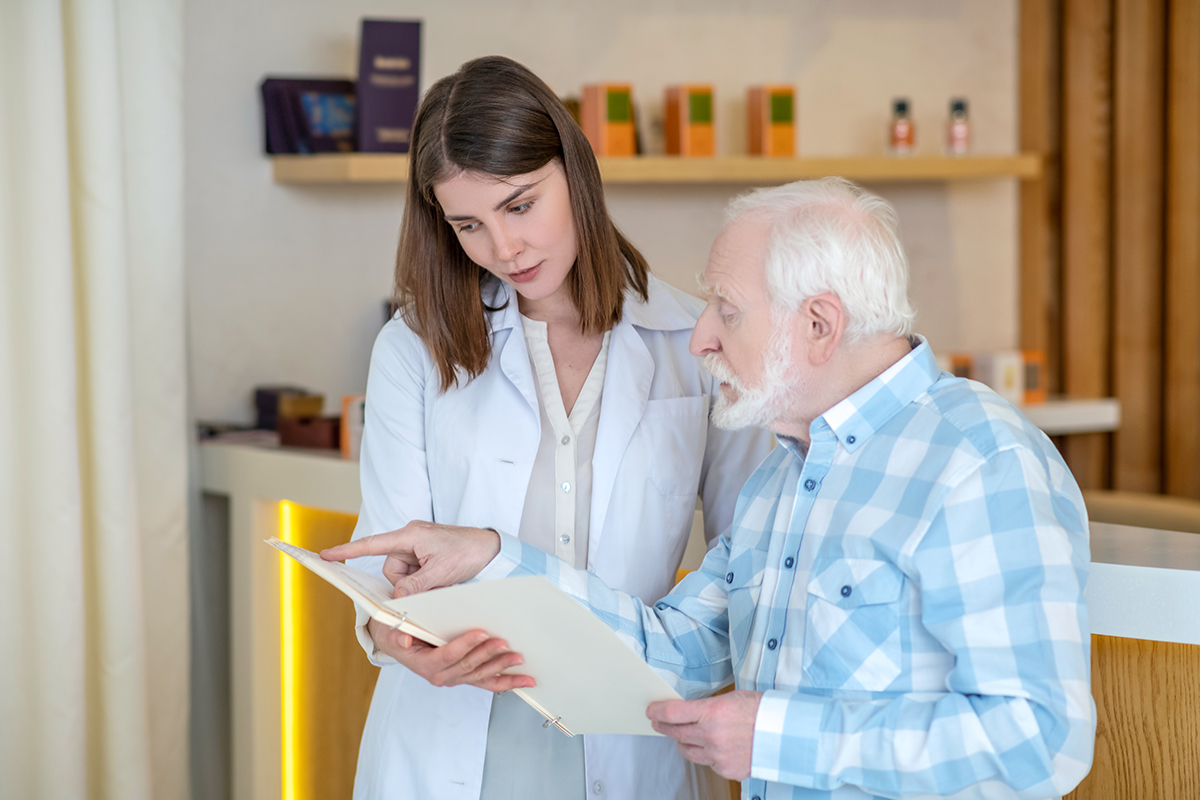Liquid measurement is essential in different fields ranging from academics in subjects such as chemistry, medicine in measuring liquid medicine to activities at home such as cooking. Therefore, learning how to measure liquids can be a beneficial skill. However, different countries will have different ways to measure liquids. As a result, the exact liquid measurements can be given in different units, and conversions must be made to obtain the needed amount. Also, similar units such as gallons will mean a different amount of liquid depending on the country where you are located. Therefore, to simplify liquid conversions, measurement charts are used.
Liquid Measurement
A liquid measurement is any measure or amount of liquid. For example, the amount of liquid in a container and its standard unit of measurement can be defined as a liquid measurement. Charts have been made by mankind to ease the measurements. Other terms used to refer to liquid measurements are volume and capacity of a container.
How much is a:
- Fluid ounce: A fluid ounce is approximately 30 ml of liquid in both the U.S. and the U.K. However, it implies 28.4ml of a liquid in the U.K. while it represents 29.6 ml of a liquid in the U.S.
- Note: Fluid ounce is a measurement of volume, whereas an ounce is a measure of the weight of a liquid.
- Pint: A pint in the U.S. is 16 fluid ounces which are 16*29.6ml or approx., 473 ml of a liquid. In the U.K., a pint is taken to be 20 fluid ounces (20*28.4ml) or about 568 ml of a liquid.
- Gallon: A gallon in the U.S. is 8 pints (8*473ml) or 128 fluid ounces (128*29.6ml), about 3.8 liters. In the U.K, a gallon is 8 pints (8*568ml) or 160 fluid ounces (160*28.4ml), which is about 4.4 liters.
Liquid Measurement Charts
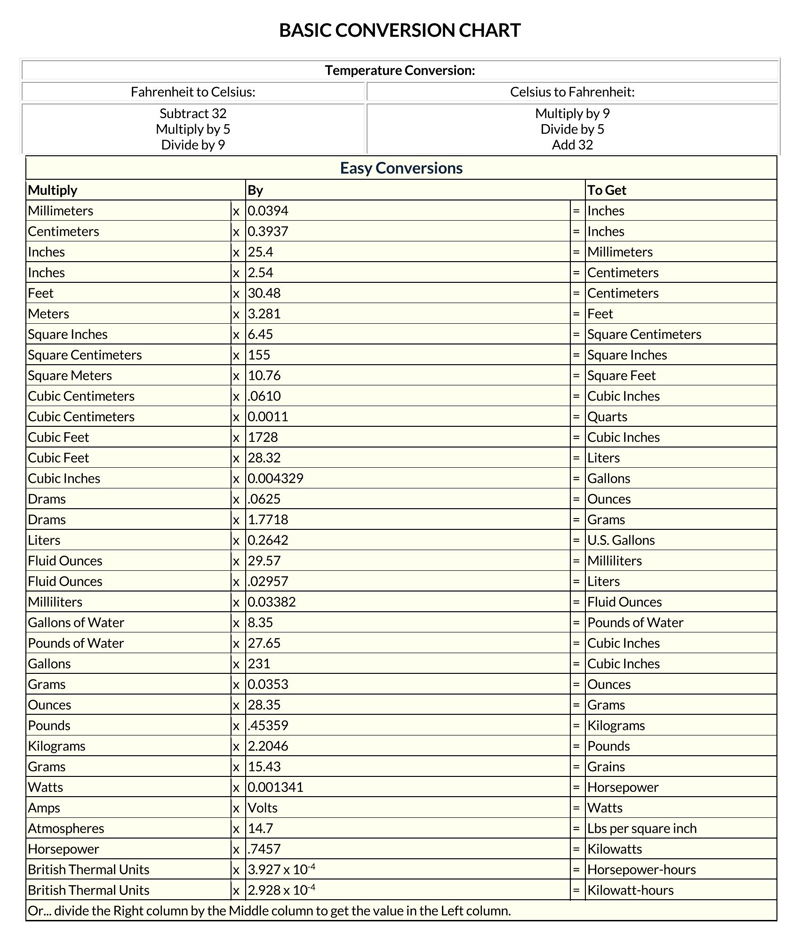
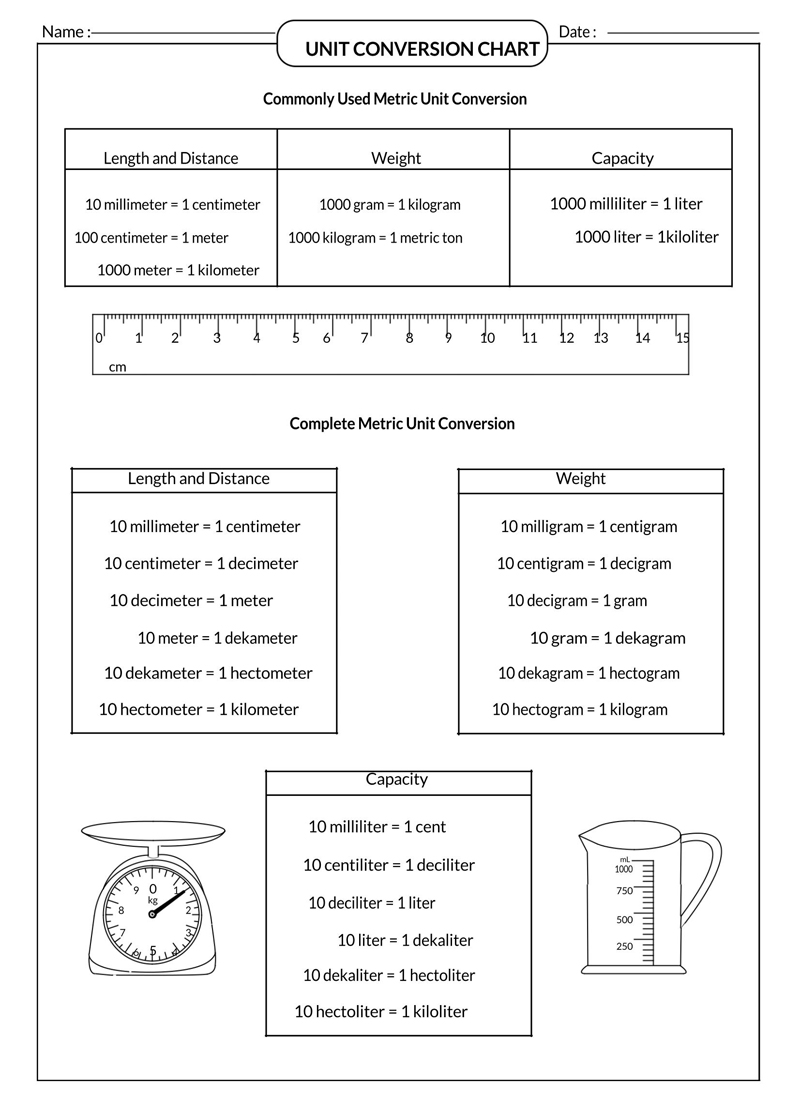
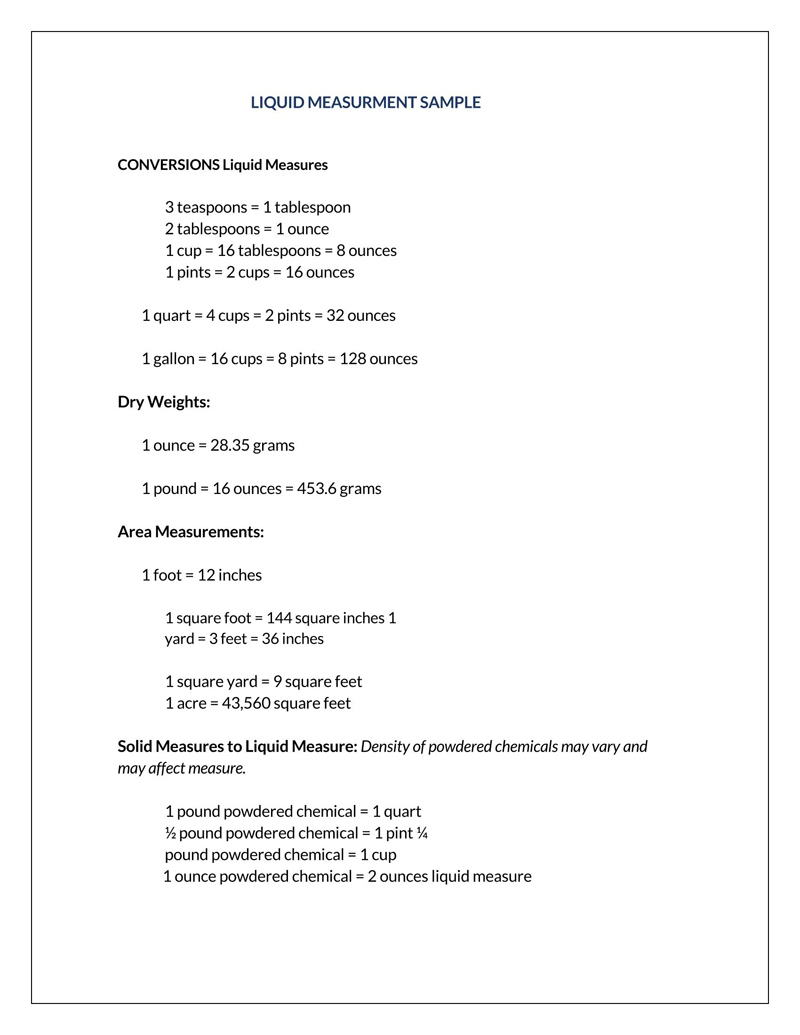
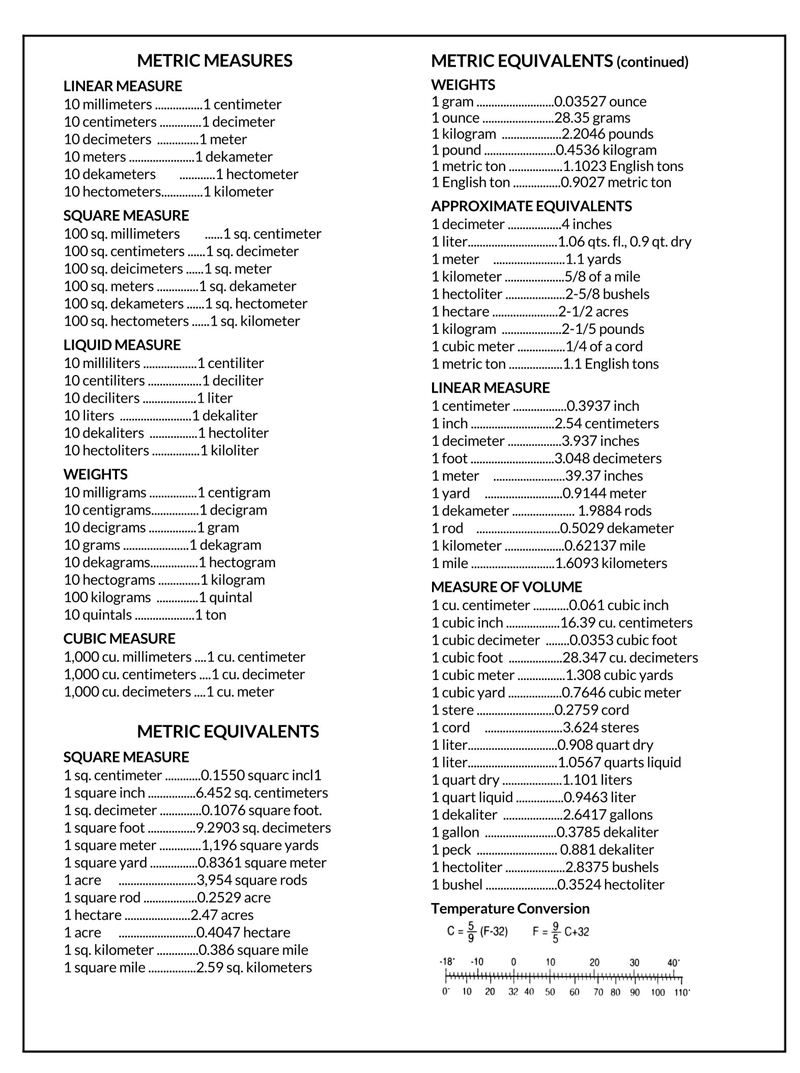
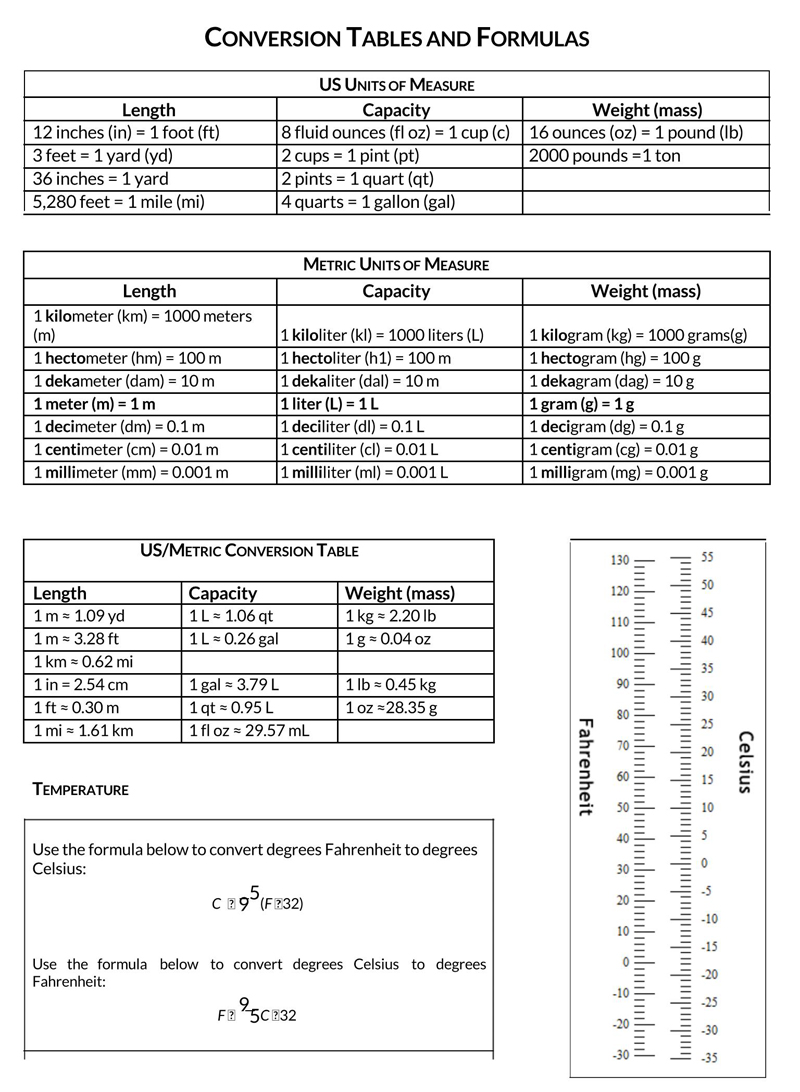
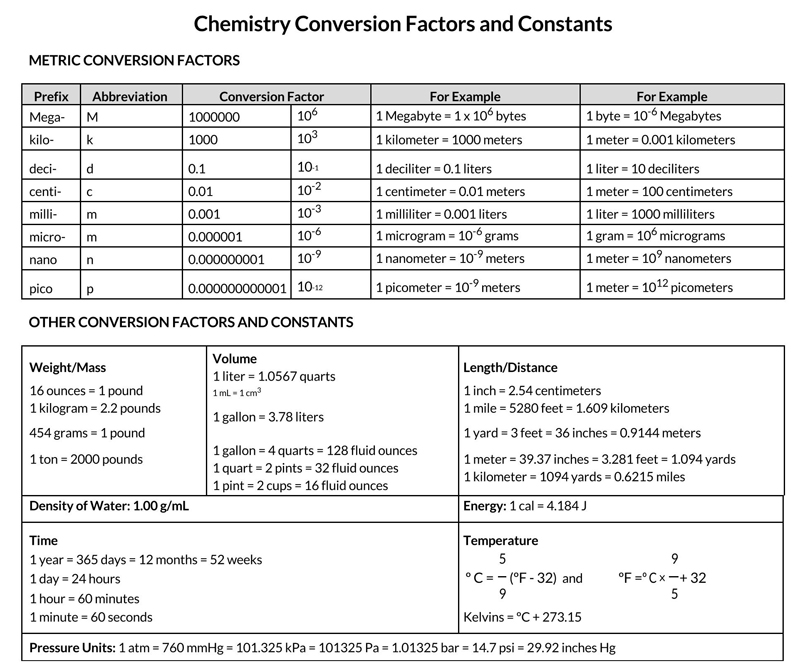
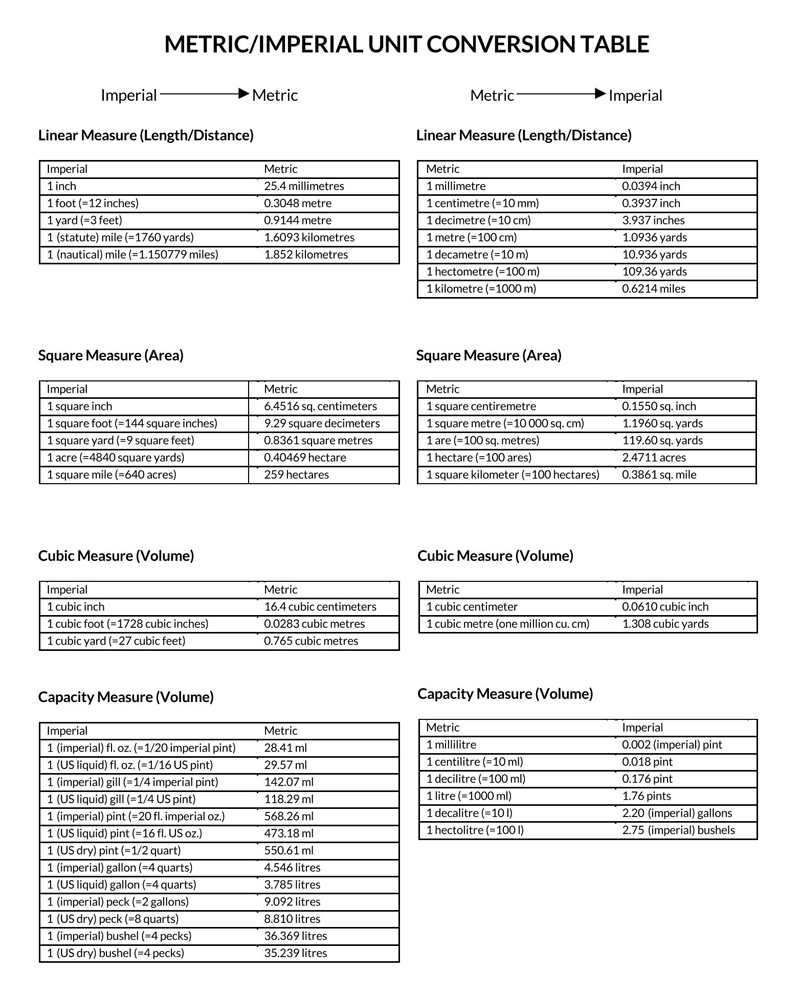
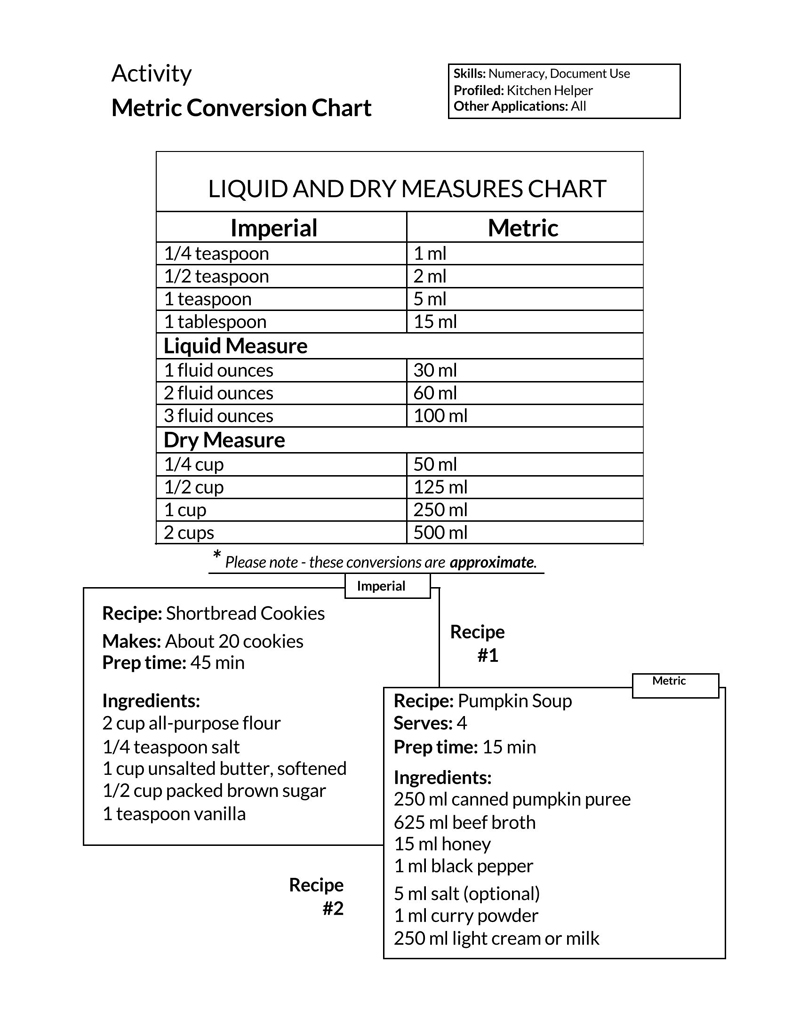
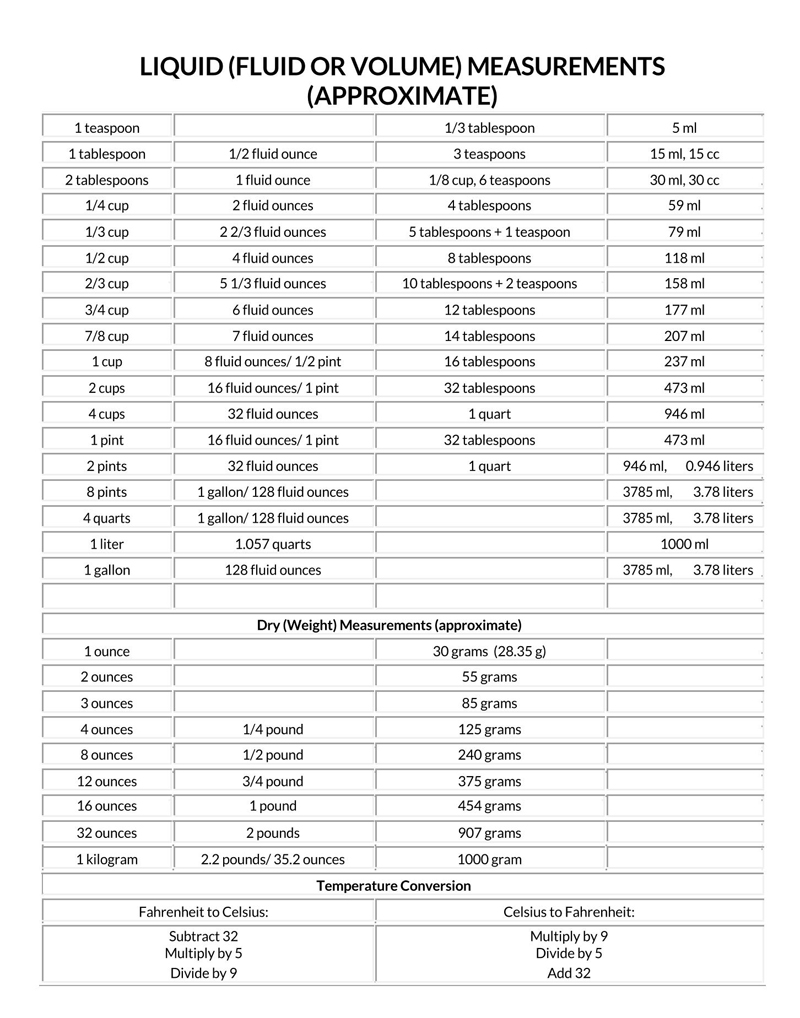
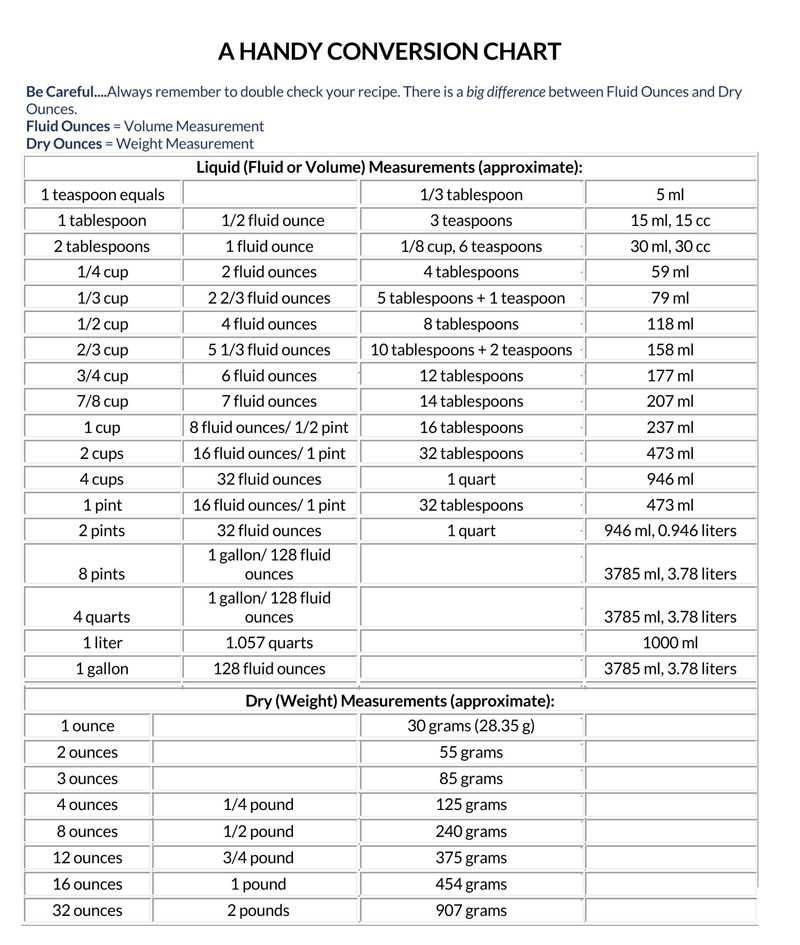
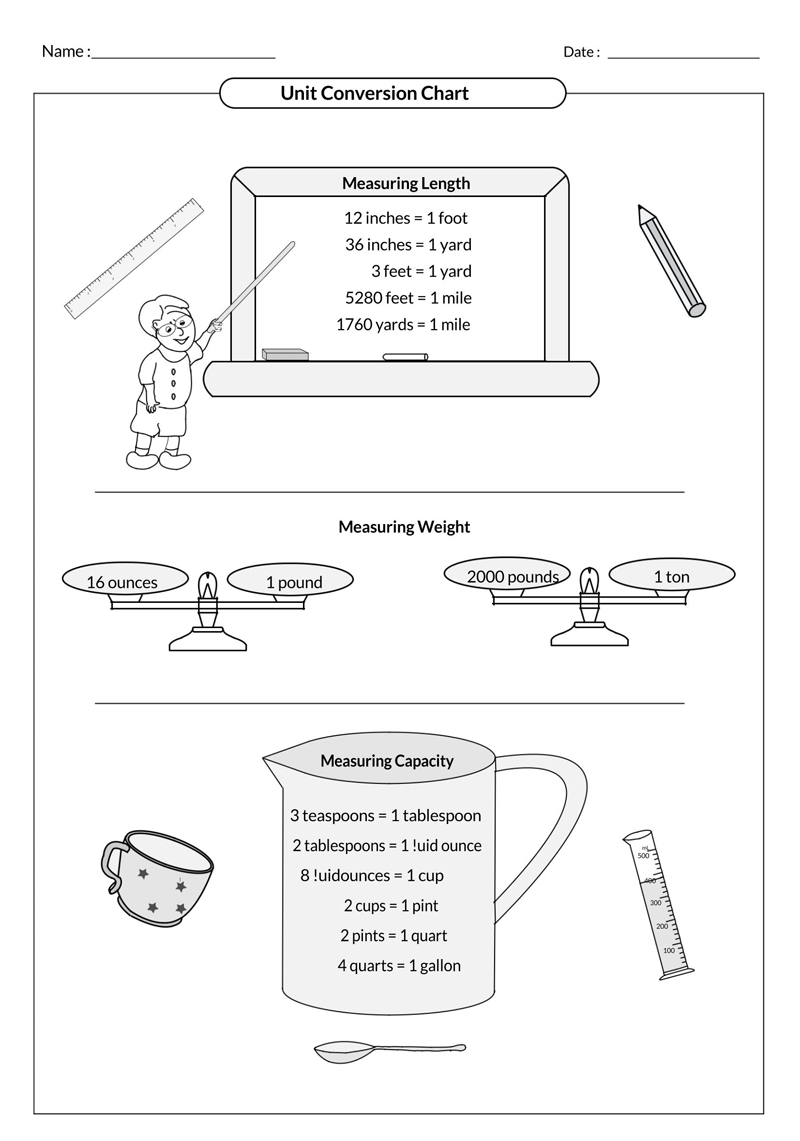
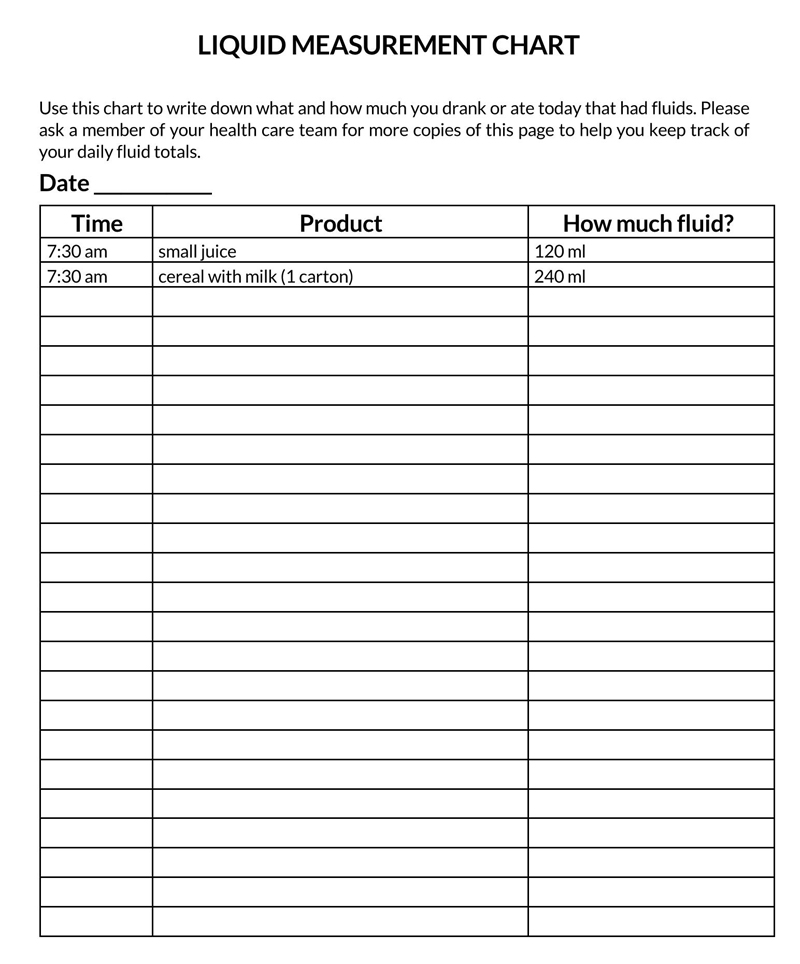
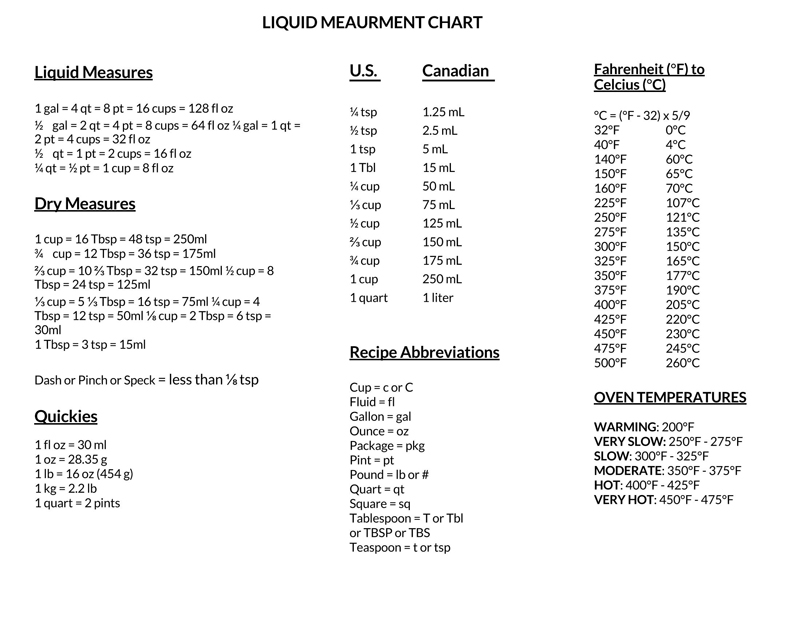
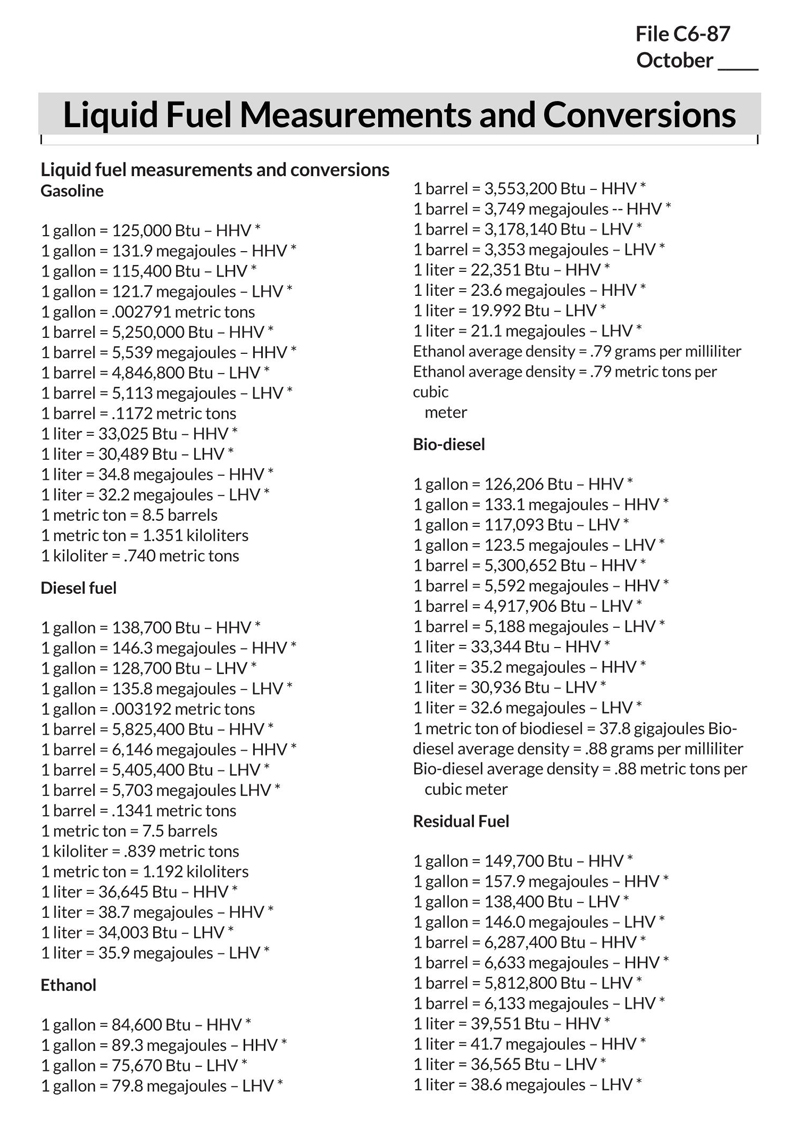
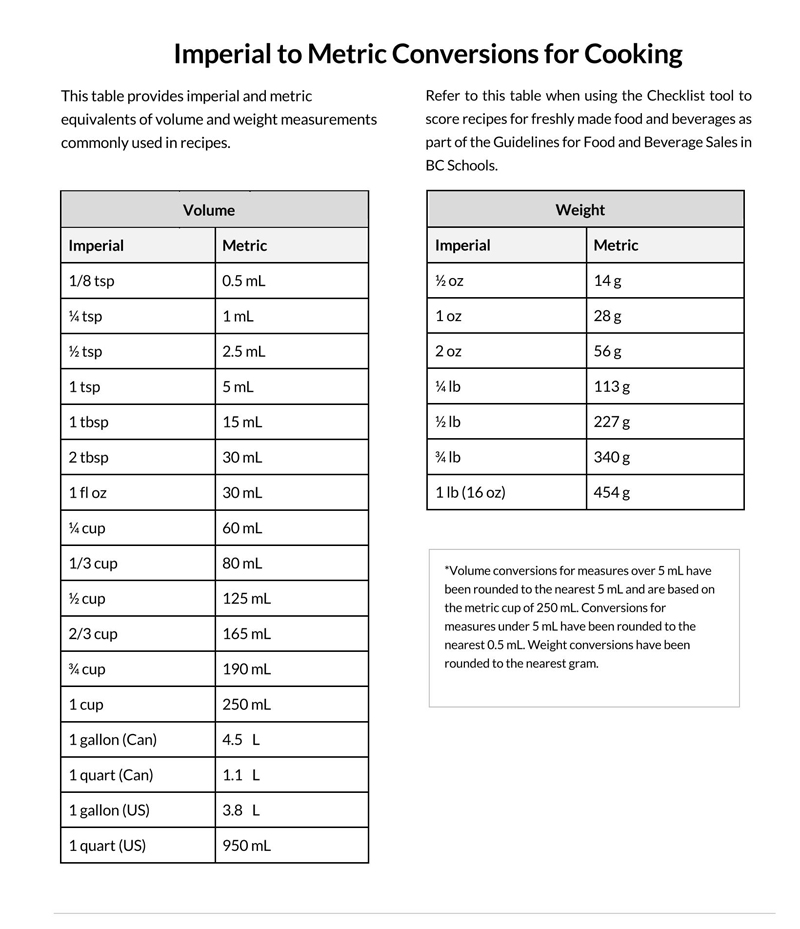
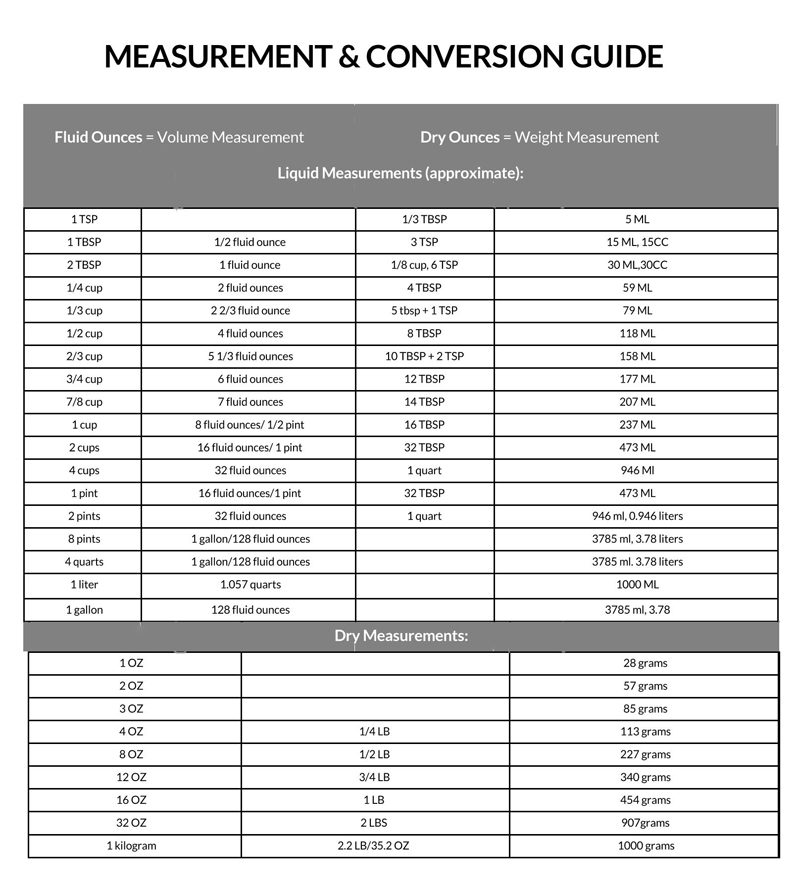
Units of Liquid Measurement
There are multiple units of liquid measurement. The broad categories of the measurements are U.S. Customary units, UK Imperial units, and Metric units or international systems of measurement.
| Metric Units/international system | U.S. Customary Units | UK Imperial Units |
|---|---|---|
| Millilitre (ml) | Fluid ounce (fl. oz.) | Fluid ounce (fl. oz.) |
| Centilitre (cl) | Cup | Cup |
| Litre (l) | Pint | Pint |
| Kilolitre (kl) | Quart | Quart |
| Liquid gallon | Liquid gallon |
Metric units’ conversion chart
| To millilitre | To centilitre | To decilitre | To litre | To kilolitre | |
|---|---|---|---|---|---|
| Millilitre | *1 | Divide by 10 | Divide by 100 | Divide by 10^3 | Divide by 10^6 |
| Centilitre | Multiply by 10 | *1 | Divide by 10 | Divide by 100 | Divide 10^5 |
| Decilitre | Multiply by 100 | Multiply by 10 | *1 | Divide by 10 | Divide by 10^4 |
| Litre | Multiply by 1000 | Multiply by 100 | Multiply by 10 | *1 | Divide by 10^3 |
| Kilolitre | Multiply by 10^6 | Multiply by 10^5 | Multiply by 10^4 | Multiply by 1000 | *1 |
U.S. Customary unit conversion chart
| To Fluid ounce | To Cup | To Pint | To Quart | To Gallon | |
|---|---|---|---|---|---|
| Fluid ounce (gl. oz.) | *1 | Divide by 8 | Divide by 16 | Divide by 32 | Divide by 128 |
| Cup (c) | Multiply by 8 | *1 | Divide by 2 | Divide by 4 | Divide by 16 |
| Pint (pt.) | Multiply by 16 | Multiply by 2 | *1 | Divide by 2 | Divide by 8 |
| Quart (qt) | Multiply by 32 | Multiply by 4 | Multiply by 2 | *1 | Divide by 4 |
| Gallon (gal) | Multiply by 128 | Multiply by 16 | Multiply by 8 | Multiply by 4 | *1 |
UK Imperial unit conversion chart
| To Fluid ounce | To Cup | To Pint | To Quart | To Gallon | |
|---|---|---|---|---|---|
| Fluid ounce (gl. oz.) | *1 | Divide by 10 | Divide by 20 | Divide by 40 | Divide by 160 |
| Cup (c) | Multiply by 10 | *1 | Divide by 2 | Divide by 4 | Divide by 16 |
| Pint (pt.) | Multiply by 20 | Multiply by 2 | *1 | Divide by 2 | Divide by 8 |
| Quart (qt) | Multiply by 40 | Multiply by 4 | Multiply by 2 | *1 | Divide by 4 |
| Gallon (gal) | Multiply by 160 | Multiply by 16 | Multiply by 8 | Multiply by 4 | *1 |
Where are These Units of Liquid Measuring Used?
The measurement units are utilized for commercial and domestic purposes. For this purpose, the measurement charts are used. The buying and selling of liquid commodities, for example, oil, water, petrol, etc., will require that measurements be used for packaging and pricing purposes.
EXAMPLE
An example of the importance of the measurement units is the use of standardized measurement units, which traders from different countries can utilize to determine how much to sell or buy per a specified measurement.
For domestic purposes, the measurement units are used to determine how much ingredients or water to use when cooking or performing specific tasks such as feeding a baby within the house.
DO YOU KNOW
Liquid measurement existed as early as the Roman Empire, for which ancient Roman units were used. They marked bronze vessels to measure liquids. They used a unit named “sextarius,” equivalent to the modern-day Imperial pint of 568ml.
Viscosity is the thickness of a liquid. The thicker a liquid is, the higher its viscosity. For example, melted chocolate, honey, and mayonnaise have a higher viscosity than water, oil, and milk.
Tools for Liquid Measuring
A wide variety of tools are used to measure liquids depending on the use and the setting. You may have interacted with liquid measuring tools more than you think – at home, store, restaurant, at work, etc. Most measuring tools are made of glass or plastic.
The following are the different tools commonly used to measure liquids.
Measuring cup and pitcher
The most common liquid measuring tools used in a household are measuring cups and pitchers. A measuring cup and pitcher are generally used to measure liquid ingredients in the kitchen. Other tools used in a home setting are cups and spoons.
These tools are essential in getting the proper amounts when preparing meals with specific recipes, administering prescribed liquid medicine. Most of these liquid measuring tools will usually have measurement markings that users can top up to measure any liquid.
Laboratory essentials
Now, in a more commercial setting, in every laboratory, there are liquid measuring tools. These include beakers, test tubes, graduated cylinders, and conical flasks. These tools are permanently marked in either metric or U.S. customary units and are used for scientific and clinical purposes.
With most clinical and scientific heavily reliant on precision, laboratory liquid measuring tools measure the exact amounts of chemicals and liquid compounds needed. As a result, laboratory essentials will vary in size due to the wide range of liquid amounts needed for tests and experiments.
INTERESTING FACT
Mercury is the only known liquid metal.
Liquid Measurement Conversion Charts
Accuracy in measuring liquids is essential regardless of whether you are trying out a new recipe, conducting a chemistry practical, or doing a clinical test in the laboratory. Therefore, the best practice would be to have the measurement conversion chart close by for a reference when measuring liquids.
The following are different types of liquid measurement conversion charts that can resolve conflicting units of the measurements.
Basic liquid measure conversions
An elemental measurement conversion chart will illustrate conversions between tablespoons, teaspoons, ounces, cups, pints, quarts, and gallons. While some conversions between these units may be straightforward, it is not easy to keep it all at the back of the mind.
These conversion charts help users to avoid errors in measurements. Basic liquid measure conversions are as shown below.
| Gallon | Quart | Pint | Cup | Fluid ounce | Tablespoon | Teaspoon |
|---|---|---|---|---|---|---|
| ½ fl. oz. | 1 Tbs. | 3 tsp. | ||||
| 1/8 c. | 1 fl. oz. | 2 Tbs. | 6 tsp. | |||
| ¼ c. | 2 fl. oz. | 4 Tbs. | 12 tsp. | |||
| ½ c | 4 fl. oz. | 8 Tbs. | 24 tsp. | |||
| ¼ qt. | ½ pt. | 1 c. | 8 fl. oz. | |||
| ½ qt. | 1 pt. | 2 c. | 16 fl. oz. | |||
| ¼ gal. | 1 qt. | 2 pt. | 4 c. | 32 fl. oz. | ||
| ½ gal. | 2 qt. | 4 pt. | 8 c. | 64 fl. oz. | ||
| 1 gal. | 4 qt. | 8 pt. | 16 c. | 128 fl. oz. |
Fluid ounce to metric conversions
A fluid ounce to metric conversion chart is used whenever converting metric measurements to fluid ounces.
EXAMPLE
Using a recipe or manual from a country that uses metric measurements to U.S. customary units or UK Imperial units can be used.
Once the metric measurements have been converted to fluid ounces, they can be converted to other teaspoons, tablespoons, or cups. Metric measurements to fluid ounces conversions are as illustrated below.
| Metric measure | Fluid Ounces |
|---|---|
| 15 ml | ½ fl. Oz. |
| 30 ml | 1 fl. Oz. |
| 59 ml | 2 fl. Oz. |
| 118 ml | 4 fl. Oz. |
| 237 ml | 8 fl. Oz. |
| 473 ml | 16 fl. Oz. |
| 946 ml | 32 fl. Oz. |
| 1.9 L. | 64 fl. Oz. |
| 3.8 L. | 126 fl. Oz. |
NOTE
The conversions in a liquid measurement chart are rounded off to the nearest whole number – for example, in U.S. Customary units, a fluid ounce is 29.57 ml, but it is simplified to 30 ml.
Standard to metric conversion (for abbreviated units as well)
Standard to metric conversion charts is meant to convert different metric units, standard units to other units, and from standard units to metric units. These conversions are illustrated below:
Standard to metric conversations
| STANDARD MEASURE | EQUIVALENT TO | PRECISE CONVERSION | APPROXIMATE CONVERSION |
|---|---|---|---|
| 1 tablespoon | 3 teaspoons | = 14.78677 millilitres | 15 millilitres |
| 1 fluid ounce | 2 tablespoons | = 29.57353 millilitres | 30 millilitres |
| 1 cup | 8 fluid ounces | = 236.58824 millilitres | 237 millilitres |
| 1 pint | 2 cups | = 473.17648 millilitres | 473 millilitres |
| 1 pint | 16 fluid ounces | = 473.17648 millilitres | 473 millilitres |
| 1 quart | 2 pints | = 946.35296 millilitres | 946 millilitres |
| 1 gallon | 4 quarts | = 3.7854 litres | 3.8 litres |
| 1 gallon | 128 fluid ounces | = 3.7854 litres | 3.8 litres |
| 1 gallon = 4 quarts = 8 pints = 16 pints = 128 fluids ounces |
Standard to metric conversations(abbreviated)
| STANDARD MEASURE | EQUIVALENT TO | PRECISE CONVERSION | APPROXIMATE CONVERSION |
|---|---|---|---|
| 1 tbsp | = 3 tsp | = 14.78677 ml | 15 mL |
| 1 fl oz | = 2 tbsp | = 29.57353 ml | 30 mL |
| 1 cup | = 8 fl oz | = 236.58824 ml | 237 mL |
| 1 pint | = 2 cups | = 473.17648 ml | 473 mL |
| 1 pint | = 16 fl oz | = 473.17648 ml | 473 mL |
| 1 quart | = 2 pints | = 946.35296 ml | 946 mL |
| 1 gallon | = 4 quarts | =3.7854 l | 3.8 L |
| 1 gallon | = 128 fl oz | = 3.7854 l | 3.8 L |
| 1 gallon = 4 quarts = 8 pints = 16 cups = 128 fl oz |
Metric to standard conversion (for abbreviated units as well)
Metric units are also converted to standard units. Metric to standard conversion charts are useful in countries where standard units are predominantly used. Such type of liquid measurement chart is shown below.
Converting metric to standard conversations
| METRIC MEASURE | EQUIVALENT TO | PRECISE CONVERSION | APPROXIMATE CONVERSION |
|---|---|---|---|
| 1 millilitre | = 0.033814 fluid ounces | 0.034 fluid ounces | |
| 1 centilitre | = 10 millilitres | = 0.33814 fluid ounces | 0.34 fluid ounces |
| 1 litre | = 100 centilitres | = 33.814022 fluid ounces | 33.8 fluid ounces |
| 1 litre | = 100 millilitres | = 2.113376 pints | 2.11 pints |
| 1 litre = 100 centilitres = 1000 millilitres |
Converting metric to standard units(abbreviated)
| METRIC MEASURE | EQUIVALENT TO | PRECISE CONVERSION | APPROXIMATE CONVERSION |
|---|---|---|---|
| 1 mL | = 0.033814 fl oz | 0.034 fl oz | |
| 1 cL | = 10 mL | = 0.33814 fl oz | 0.34 fl oz |
| 1 L | = 100 cL | = 33.814022 fl oz | 33.8 fl oz |
| 1 L | = 100 mL | = 2.113376 pints | pints |
| 1 L = 100 cL = 1000 mL |
Tips for Using Measuring Tools
Getting accurate measurements is critical in the success of tests, recipes, and experiments. Other than using the right measuring tool, there are other things to do to obtain the correct measurements.
- Set the measuring tool on a flat surface and bend or lean such that you are at eye level with the liquid meniscus.
- Ensure that you can see the liquid’s level on the markings of the measuring tool.
- Note that measuring tools used for both liquid and dry liquid is not entirely accurate for measuring liquids.
- Use teaspoons and tablespoons when measuring small increments of liquid, say any measurement under 2 fluid ounces.
- Always fill the measuring spoon to the rim.
Key Takeaways
- Liquid measurement units will typically depend on where the measurements are taken. There are U.S. customary units, U.K. imperial units, and metric measurements.
- Learning how to convert liquid measurements from one unit to the other is essential in getting accurate measurements in cases where the liquid measurements to be used are given in different units.
- The four main types of liquid measurement charts are fluid ounce to metric conversions, basic fluid measure conversions, standard to metric conversions, and metric to standard conversion charts.
- Liquid measurement charts are used for commercial and household purposes. Examples of applications of measurement charts are cooking, clinical tests, etc.
